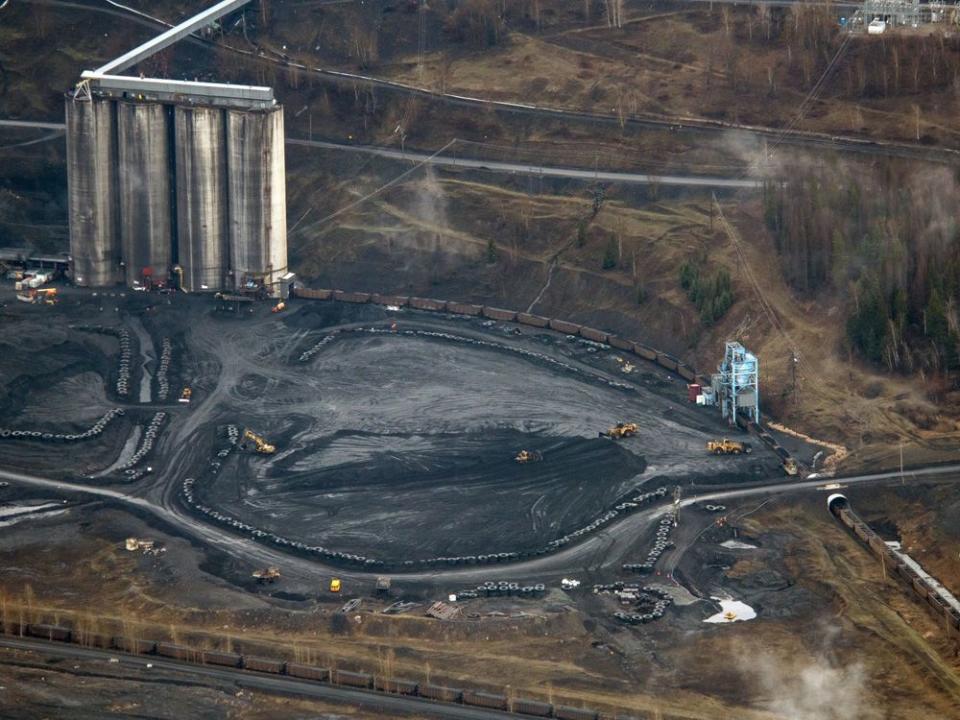'All those mouths need to be fed:' BHP CEO aims to dominate potash globally through Canada

The world’s biggest miner BHP Group Ltd. is aiming to enter Canada’s potash industry in a big way when it starts producing the commodity in 2026 in Saskatchewan. The Jansen potash project is one of its biggest capital investments and while prices of the commodity have taken a hit in recent times, the miner is confident the expenditure will be worth it in the long run.
BHP’s chief executive Mike Henry was born in Canada and studied at the University of British Columbia. He left for Australia in 1999 to work for the Melbourne-based company and gradually rose up the ranks to become head of it in 2020.
In a 30-minute interview with the Financial Post, Henry discussed the rationale behind BHP’s potash investment, how the company intends to compete with Nutrien Ltd., the world’s largest potash producer, Canadian mining policies and whether or not he’s interested in Teck Resources Ltd.’s coal unit.
Financial Post: Let’s start with potash. Can you give us an update on how things are going in Saskatchewan at Jansen?
Mike Henry: It’s a big project, and it’s the single-largest capital project we have undertaken in U.S. dollar terms. It’s on track. In fact, it’s so on track that we have advanced our forecast for first production from 2027 to 2026. And because of the increasing confidence we have around Jansen Stage One execution, coupled with the shift in market dynamics because of the tragedy that’s played on in Russia/Ukraine, we’ve said, ‘Let’s accelerate studies into Jansen Stage Two and we’ll have the option available to us to move to sanctioning Jansen Stage Two sometime during the course of this financial year.
Now, why potash? We think potash is a really attractive commodity: solid ongoing demand growth in a world where population is growing; we’ll probably see another 25 per cent added to the global population by 2050. All those mouths need to be fed. Rising living standards mean more calorie-intensive diets, constraints on arable land globally and more sustainable farming practices needed. All those things come together to provide a pretty positive outlook for potash demand over the coming two or three decades, especially in a world that is increasingly focused on decarbonization and becoming more sustainable.
There are only two big production basins, Russia-Belarus and Canada. Obviously, Canada is a much more attractive investment destination on a whole range of fronts, but including potash. And so this is something that was identified the better part of two decades ago as being an attractive commodity. BHP started building up a position in potash at that point in time. And then recently moved to the sanction, the first phase, what will ultimately be a very material business for the company.

FP: The price of potash seems to have taken a hit recently. Is that a concern?
MH: We’re looking at the long term because keep in mind that we sanctioned Jansen Stage One back in August 2021, which was before all the unforeseen events of Russia and Ukraine played out. Prices then shot up in response to that, and have come back again, but as a long-term company, our investment decisions don’t get driven at all by what’s happening in the short-term price. It’s all around the forecast that we have for medium-to-long-term market dynamics and pricing.
FP: Is there a price you need for the investment to be profitable?
MH: Well, of course, there will always be. Market price is the single biggest driver of investment returns. But a key plank in the BHP strategy is to have large assets that are expandable, which provide long-term optionality in terms of being able to build them up further … because in a cyclical industry, we want to ensure that we’re able to bring our mining, finding, developing and shipping expertise to bear in a way that generates positive cash flows throughout the cycle. Even when you’re at low points on pricing, we want our mining to be continuing to generate positive margins. And in that regard, Jansen is going to be at the very low end of the cost curve. It’s going to be a pretty attractive business in all markets.
FP: It’s not a business that BHP has been in before. It’s sort of a learning curve then to figure out the business, to find markets.
MH: Whilst we have not mined potash specifically, we know how to mine. We take pride in our mining capability, but, obviously, it’s a different industry in different markets. We have had a long time to learn, 15-plus years now of learning about it, and, of course, talent is mobile. What you’ll find is that whilst as a company, BHP hasn’t been a miner or producer of potash historically, a lot of people working on the project, and who will lead the business going forward, do have experience in potash.
Now, the long lead time in getting the sanction has afforded us plenty of opportunity to get out there and engage with customers and other supply chain partners globally. Very positive reception to us coming into the market, as you would expect, since most customers will want more suppliers rather than less. Hence, we are confident about our ability to get in there and establish a pretty strong position quickly in potash. And, as I said, demand continues to grow.
FP: BHP at one point wanted to buy Nutrien. There always seems to be rumours out there of BHP perhaps working together with Nutrien at some point. Is the door open to some kind of commercial relationship with Nutrien going forward?
MH: Let me take it back to first principles. What we are focused on first and foremost is creating more shareholder value and value for the other stakeholders who support and depend on our business. Anything that we look at is through the lens of what is the highest value outcome for the company and for shareholders. Given where things ended up historically, we’ve gone down the path of taking on one of the best, undeveloped greenfield resources in the world. Through the work of a number of generations of management, we’ve created this great inventory of growth options where we can invest in Jansen Stage One, Stage Two, Stage Three, Stage Four. And we know that that in itself is going to be a very valuable, very material business for BHP. And so there’s no urgency or imperative to go off track from that and engage other partners.
Having said that, if there are opportunities to partner and create even more value for shareholders, it’s always something we’re going to entertain, but it’s different than where we were back before we developed this growth path in our own greenfield resources,

FP: How has your experience in Canada been with regards to its mining policies?
MH: We see Canada as a really attractive place to invest. I know there are always going to be opportunities for improvement, but if I look at Canada on a global basis, I see a jurisdiction where there’s a relatively high degree of policy stability from our perspective and the mining sector versus other jurisdictions. The resource endowment here is very strong in the commodities that BHP is seeking to grow: potash, copper and nickel.
Governments at both the provincial and federal levels in the jurisdictions we’re investing in currently are very welcoming of investment, and I have to say extraordinarily proactive about reaching out and trying to draw investment dollars in.
There are other policies like how you go about getting talent into the country and so on where I think Canada is a bit of a step ahead of some other jurisdictions in terms of how they go about facilitating that. We’ve found Canada overall, not just because of the ore in the ground, but because of the predictability and stability of policy and the proactiveness of the governments of both the federal and provincial level, an attractive place for BHP to look at investing more.
FP: Some miners have criticized the long time it takes to permit the building of a mine in Canada. Canada’s policy to make it difficult for Chinese miners to invest in critical minerals has also been criticized by some in the industry. What’s your take on this?
MH: We would not be calling ever for a relaxation of standards to speed things up. We will be saying, ‘How do you kind of like my example on productivity for BHP? How do we achieve the outcomes we all aspire to, but do so in the most efficient manner possible?’ Right around the world, there’s opportunity for improvement on that front through creating a smaller set of common standards.
We all talk about ESG (environmental, social and governance) and upholding ESG standards. There are actually myriad standards out there covering the same issues globally. One of the things that I and others have been calling for is to look at how we can move about consolidating those standards into a smaller suite of standards that we can all then line up around, and through doing so, we can move more quickly. It’ll be the same with government regulation. I know in multiple countries around the world that there are overlapping federal versus state or provincial legislation, and there will be opportunities to look at how we go about removing some of that duplication. But overall, we see Canada as being pretty attractive.
FP: How important do you think ESG is going to be for miners in the future?
MH: I think it’s going to be super important. Over the next 30 years, the world’s going to need two times as much copper, two times as much steel and four times as much nickel as it did over the past 30 years. And in order to produce all that, first, the world has to offset grade decline and the depletion of existing resources. That means more mine development. And it’s going to have to meet the increment of production from deposits that are much lower grade on average.
If we don’t have clear high ESG standards, we actually create negative outcomes or it leads to undesirable outcomes on water stewardship, biodiversity and so on and so forth. The only way that we can square the circle is by setting very clear standards. And then for capital markets to work in a way that backs companies that meet those high ESG standards.
FP: Are markets doing that? Are they properly sifting the good ones from the bad ones?
MH: The markets are still maturing. In 10 years’ time, the markets will have matured further on this front.
FP: What’s your take on the current geopolitical situation? There seems to be a growing divide.
MH: It’s been incredible to watch the rapid pace of acceleration and focus on critical mineral supply chains that have occurred in governments around the world in the past three to five years. It is getting a lot more attention. I think it’s getting attention for two reasons. One is there’s increasing awareness of just how metals-intensive the path from here is, irrespective of any geopolitical factor. There’s a recognition that on the one hand, we’re making all these commitments around decarbonization, and for us to be able to achieve those, we need to ensure there are inputs by way of copper nickel and rare earths.
Second of all, because of the broader fraying of the existing world order of free trade and so on — that’s not just even primarily about critical minerals, it’s a bit of a more general trend — the concern that has risen is to ensure that from a national economic well-being and national security perspective, it’s well understood how reliable those supply chains are for minerals and it will be different by commodity.
The other thing that I would call out is that we read a lot about critical minerals and the growing concern you see about critical minerals partnerships being entered into. Because of the speed with which this has risen as a focus, if you look into the critical minerals list for different countries, you’ll find it quite different. And so sometimes people can be talking slightly across purpose, the conversations aren’t as impactful as they could be because people have a different starting point in terms of what they consider critical minerals.

FP: Apart from metals, BHP also produces metallurgical coal. Companies such as Teck are looking to sell their coal units immediately. What’s BHP’s take on that?
MH: I’ve got no doubt that one day, the world’s steelmaking will not require metallurgical coal. But that is far in the future, and this is coming from a company that’s actually investing in startup companies through our venture arm that are looking at how they can go about producing steel without the need for carbon-based inputs. We are pretty close to the action in terms of technological developments. We’ve got partnerships in place with steelmakers who comprise about 20 per cent of the world’s steel production, helping them to decarbonize their existing blast furnace operations.
But the nascent state of the technologies, coupled with the amount of capital that is invested in a relatively young blast furnace fleet, means that for the next few decades, there’s going to be an ongoing strong need for coking coal. Having said that, steelmakers are still going to have to produce steel from the lowest possible carbon footprint.
And so what BHP has been doing is consolidating our coal portfolio. We’ve divested thermal coal, we have one mine running down currently, we’ve divested a couple of lower-grade coking coal mines, we have a divestment process underway currently for another couple of coking coal mines, such that what we’ll be left with will be a core of the highest-premium coking coal because we believe that coking coal will be in greater demand in a faster decarbonizing world. Our overall strategy has been to improve our iron ore business to become more efficient.
FP: Would Teck’s coal unit be of interest for BHP?
MH: What I have said is we want to grow in copper, nickel and potash. Those are the key areas of focus for us in growth.
This interview has been condensed and edited for clarity.
• Email: nkarim@postmedia.com
Bookmark our website and support our journalism: Don’t miss the business news you need to know — add financialpost.com to your bookmarks and sign up for our newsletters here.
